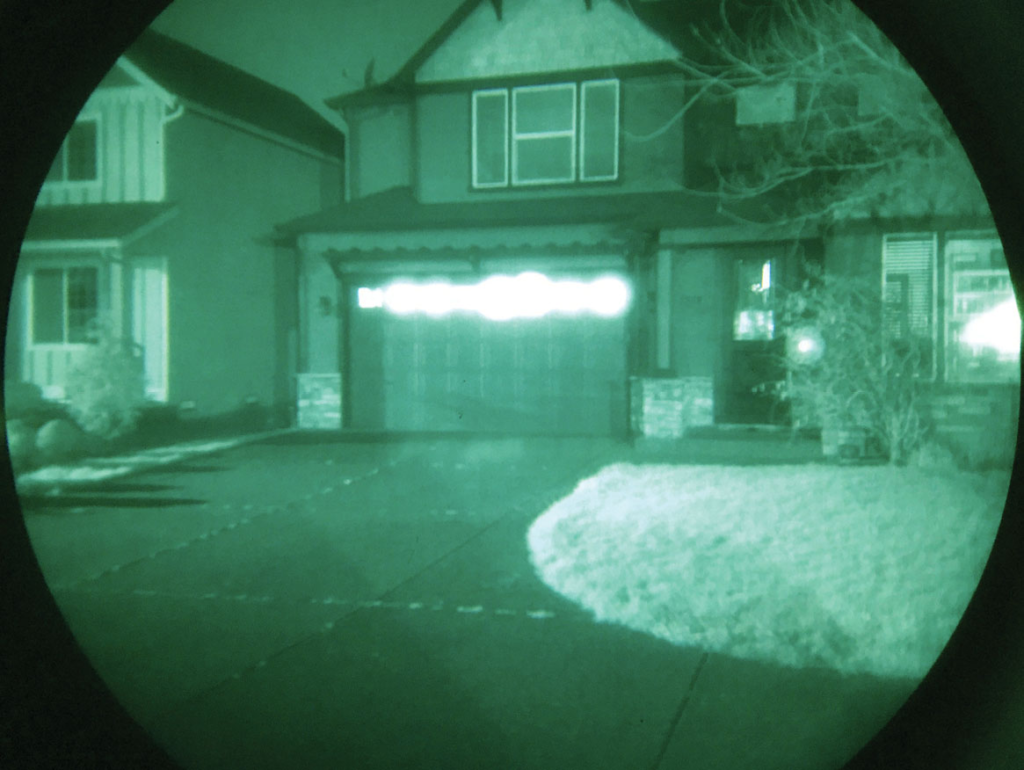In class, prior to making our own, we were tasked with choosing a photobook to research, so we can gain a better understanding of how they work, feel and look, giving us the knowledge to make ours as good as they can be.
I decided to look at Night Vision: The Art of Urban Exploration by Troy Paiva as Paiva’s work has inspired me for some time as I have studied his work prior, and I feel like it links to my current focus within this project.

1. The photographs in this image fit within the genre of night photography, and what Paiva calls ‘Light Painting’ which uses artificial light to add colour to the subject. In addition, the photographs could be considered urban, as the subject matter includes chiefly derelict buildings and vehicles. Paiva’s approach likely involves finding the locations and returning to them at night, figuring out how he’s going to light up the scene (in the cover’s case, he decided to light the outside of the van to be green and the inside to be red) and then he finally positions the camera to capture the scene he wishes to capture (so in the cover he decides to involve the two posts, some of the landscape and the night sky). The story here is likely the journey Paiva took while exploring each of the areas where he took these images.
2. My interpretation of this story is that Paiva is trying to give life back to these derelict locations and vehicles by giving them a new light he has painted on them, perhaps protesting the idea of leaving things to waste. I don’t feel like there is any particular audience Paiva is trying to adhere to, as the images are fairly art-focussed, as opposed to having a booming political statement attached to them. Generally, the book has received praise for Paiva’s ability to use ‘light painting’ as a way to give the images more depth and life, with people considering him one of the ‘acknowledged masters within the small cadre of professional night photographers’ (link).
3.
- Book in hand: The book is smooth, due to the paperback cover.
- Paper and ink: The book uses coloured ink due to his photographs primarily involving colour. The paper on the cover has more of a card-like feel, while paper with the images on are more like standard printing paper.
- Format, size and orientation: The book is 9.75 x 0.5 x 9 inches, making it a landscape oriented book (however it retains a close resemblance to a square orientation).
- Binding, soft/hard cover: The book has a softcover with a normal, spine-bound binding.
- Cover: The cover is an image taken by Paiva, which is a dark image with light painting on a car. The text has a green colour, is small and is positioned at the top.
- Title: The title ‘Night Vision’ links to using technology to see things that would not normally be seen at night. The typical understanding of night vision is that it involves a lot of colour (green with goggles or other methods such as infrared which uses multiple colours), mirroring Paiva’s style.

- Narrative: The narrative involves the journey that Paiva has experienced over the years of taking these images in this way and exploring the places that he has.
- Structure and architecture: The book involves work made from 1999 to 2007, likely from multiple projects with a similar focus.
- Design and layout: The layout of the images is not regular, with some page spreads having two or more images present, however a lot of the pages involves a classic style with one picture on a page and a caption on the other (each image has a caption). Each page is black where there is no image.
- Editing and sequencing: The book is sequenced likely by the area Paiva has photographed, likely mirroring the journey Paiva took through them.
- Images and text: There is usually captions next to each image, and some text detailing the history of a place he has visited.
